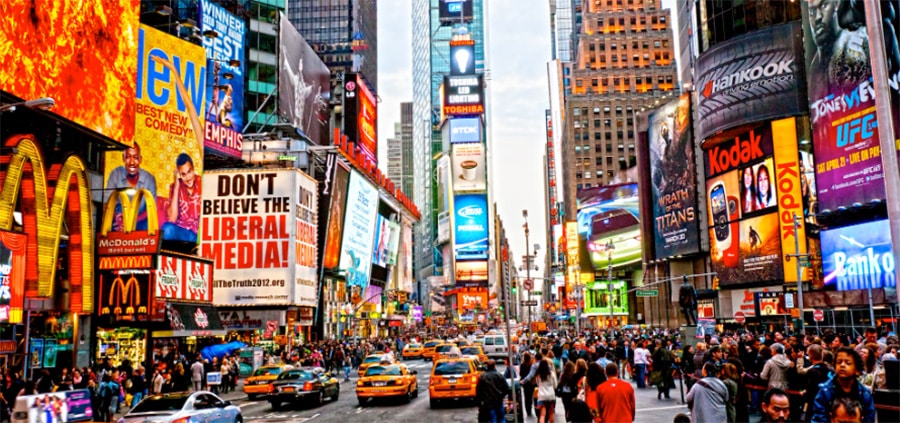
“Oh, hey, you guys host this event? Is that new?”
“We’ve hosted it for the last five years.”
“No kidding?
“You never saw that sign with our name and logo before?”
“Never noticed it.”
“Huh.”
That’s a convo a B2B client had at an industry event they’ve been hosting for years, always with the same amount of branding and signage.
So what changed?
They’ve now been running a radio branding campaign for a little over six months.
Weird, huh?
How do audio ads increase attention for visual signage?
Short Answer: MEANING is now attached to that brand logo in the minds of the public.
So now when they see it, they actually notice it.
Yes, “served vs seen” applies to more than online advertising.
Ever seen those Yankelovich studies showing the average adult is exposed to 5000+ ads per day?
Obviously that’s impossible if you’re talking about proper ads, but that study included all “brand exposures” in the mix.
That includes:
- The branding on the soda you’re drinking
- All the signs you pass driving into work, running errands, etc.
- Logos on your and others clothing, shoes, laptops, and phones
- Display ads on websites
- And so on
Once you understand that, 5000+ daily exposures makes more sense.
And indeed, modern attempts to replicate those studies using “Google Glass” type cameras have concluded it’s roughly accurate:
“In 90 minutes, Owen saw 250 adverts from more than 100 brands in 70 different formats…”
That equates to over 2,600 ads in a 16-hour day.
But, how many of those 250 “ads” were consciously “noted” by the person wearing those Google glasses?
“…The number recalled without prompting was one.”
So there are visual ads and brand imagery that’s seen…
There are ads and brand imagery that one is vaguely aware of having seen…
And there are visual ads and imagery that actually make a conscious impression.
If a viewer attaches no meaning or emotion to your logo and signage, then it just becomes so much background clutter. They’ll never even be aware of having seen it.
Which is what happened to that industry event attendee in the years prior to our radio campaign.
He undoubtedly saw my clients logo and “sponsored by” messaging, but it was instantly screened out of consciousness, despite the attendee knowing people who worked for the company.
After our radio ads’ emotions and associations wormed their way into his ears and mind, that attendee suddenly noticed the logo so that it could make a conscious impression.
My point?
A well-crafted branding campaign on radio or TV will make all your other marketing work better.
Customers will start to consciously notice your truck wraps, your digital ads, your billboards, etc.
This is why branding PLUS sales activation works better than sales activation alone — IF you divide your marketing dollars appropriately.
It’s also why Brand Codes are so important.
If a customer only catches a fraction of an ad in this media saturated world, Brand Codes ensure they know it’s YOUR ad transforming that momentary exposure into a conscious impression.
Imagine hearing the last few seconds of a TV ad playing in the next room as “They’re Grrrrreat!” echoes into your brain.
Who said that, and what product was being advertised?
That’s the power of Brand Codes.
It’s also why the most powerful Brand Codes are characters and sonic cues.

So…
Wanna make all your other marketing work better?
Wanna ensure your ads make an impression even from brief encounters?
Why not contact me to explore launching a long-term branding campaign based on characters, stories, Brand Codes, and sonic cues?
- Getting a Foot in the Door — Of Perception - November 27, 2025
- What Digital Superstars Know About Offline Advertising - November 17, 2025
- Unmistakable: A Tale of Two Boots and Branding Done Right - November 8, 2025
